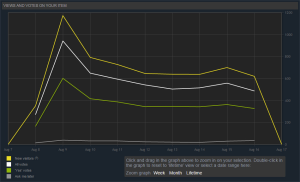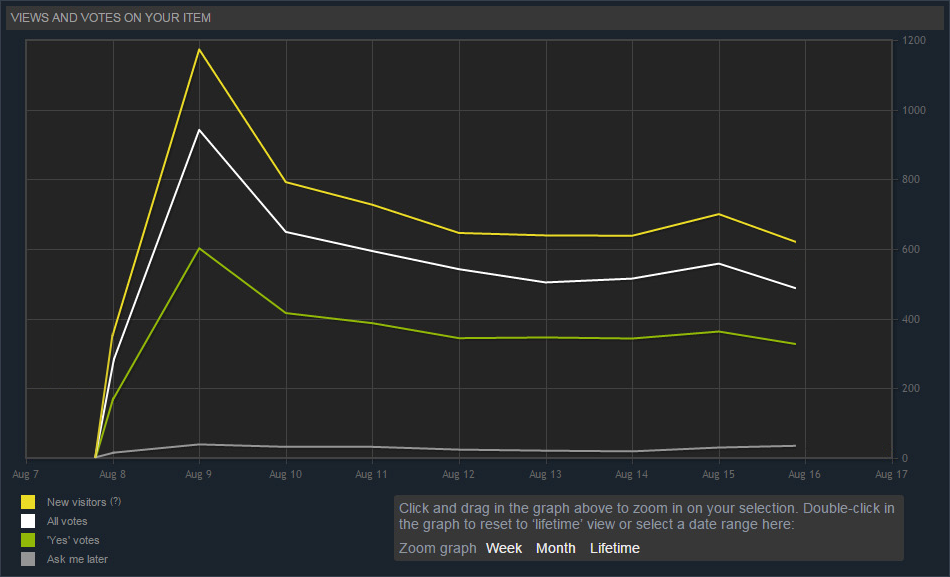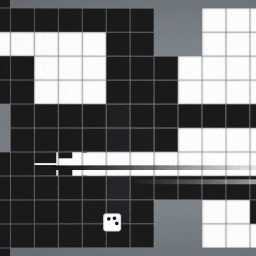INVERSUS was greenlit on Steam yesterday! Prior to starting the greenlight process, I was rather curious about what to expect and what I should be doing. Thus, I read a bunch of postmortems about other games’ experiences in the process. People say it is far easier than it has ever been and perhaps another postmortem isn’t of great use, but I still want to return the favor and give future devs another reference point.
Prior to this, I was familiar with the concept behind Greenlight and some general DOs and DON’Ts, but I hadn’t ever really dug into the actual system and viewing games inside it. My biggest surprise was how large of a quality range you can find in the submissions. There are a number of unpolished projects and stepping out of that band is the best way to separate yourself.
INVERSUS has a very minimalist art style that has had a ton of thought poured into it, but I am prepared for a segment of the mass market to have a hard time differentiating it from the plethora of blocky indie games out there. That said, on Steam Greenlight, almost 100% of my feedback was glowing. This was not due to an extensive prior community around the game and it was not due to any internet coverage. It was almost entirely due to presenting a product that showed a high level of craft.
Let’s dive into how the game actually performed and then we can go over some of the parts that helped it get there and how I feel about it all.
Performance
The game had 6,289 unique visits to the page. 5,288 of those visitors actually voted. 3,294 of those votes were “Yes” when presented with the question “Would you buy this game if it were available in Steam?”. This is the percentage breakdown of the voters.
The game was greenlit in a span of eight days. This is the graph directly from Steam.

Below is a touched up version of the graph to better represent the time period the project was actually live. I flipped the switch a little before 1pm on a Sunday afternoon and got approved around 3pm on the Monday eight days later. From what I could gather the greenlight clock would actually flip days around 5pm my time (PST).

The most obvious takeaway here is that you get a really large bump of views at the start. No one has rated your game yet so it will get into more queues and you are on the front page. I was also lucky enough to hold a spot on the front page for 3 whole days. This is entirely based on how many new games are getting submitted after yours.
I also found it interesting that I got a bump in views on the Sunday before approval. Being curious if somewhere online was responsible for linking to the page or if it was just normal steam activity I checked in with the Google Analytics. Steam lets you link into Google’s system which is a great feature and I recommend doing it. First off, it is worth verifying that everything is working and as you can see in this similarly shaped graph from google it seems likely.
It turns out that almost all of my traffic every day came directly from within Steam. The only referrals that were even noticeable were about 100 from twitter, 50 from facebook, and 50 from a greenlight postmortem that was posted to gamasutra and referenced my page (but it was not responsible for the bump).
Presentation
As I’m sure you have read elsewhere, you want a good trailer and you want a good branding image. INVERSUS is built onto top of a simple yet novel mechanic and communicating how it works was my primary goal in the trailer. It starts of with a very quick “story” demonstrating how attacks are used for both spatial control and destroying the opponent. I tried to keep the focal point moving at each “chapter” to keep the viewer engaged during what is arguably a veiled tutorial. Once that is out of the way, I kick into fast cuts of actual gameplay knowing that you are better able to appreciate the mechanical complexity of a match.
For the branding image, I wanted something that would catch the eye with gameplay, show competence in my ability to deliver a polished project, and entice the viewer to find out more.
In a continued effort to showcase a bit of class, I used a lot of images in my description section (you can see it here) to breakup the wall of text and make it look like I had more control of the HTML layout than I actually did. I tried to model it after a subset of what is on inversusgame.com and I think it worked out well.
Conclusion
At the end of the day, if you are making a polished game, I think you will be just fine getting through. You don’t even need to focus on advertising outside of Greenlight (although it is a good talking point).
Had someone told me not to worry too much about the process, I might not have agonized over the details as much and saved myself some time and headache, but I also might not have put my best foot forward to the degree that I did. When it comes down to it, just submitting to Greenlight has put over 6000 new eyes on my game and a large number of them are looking forward to it based on what they saw. This is where you will build your initial set of followers on Steam that want to be notified when you actually release. From that viewpoint, I think all the agonizing and polish ends up well worth it even if the game could eventually slip through with less work.


